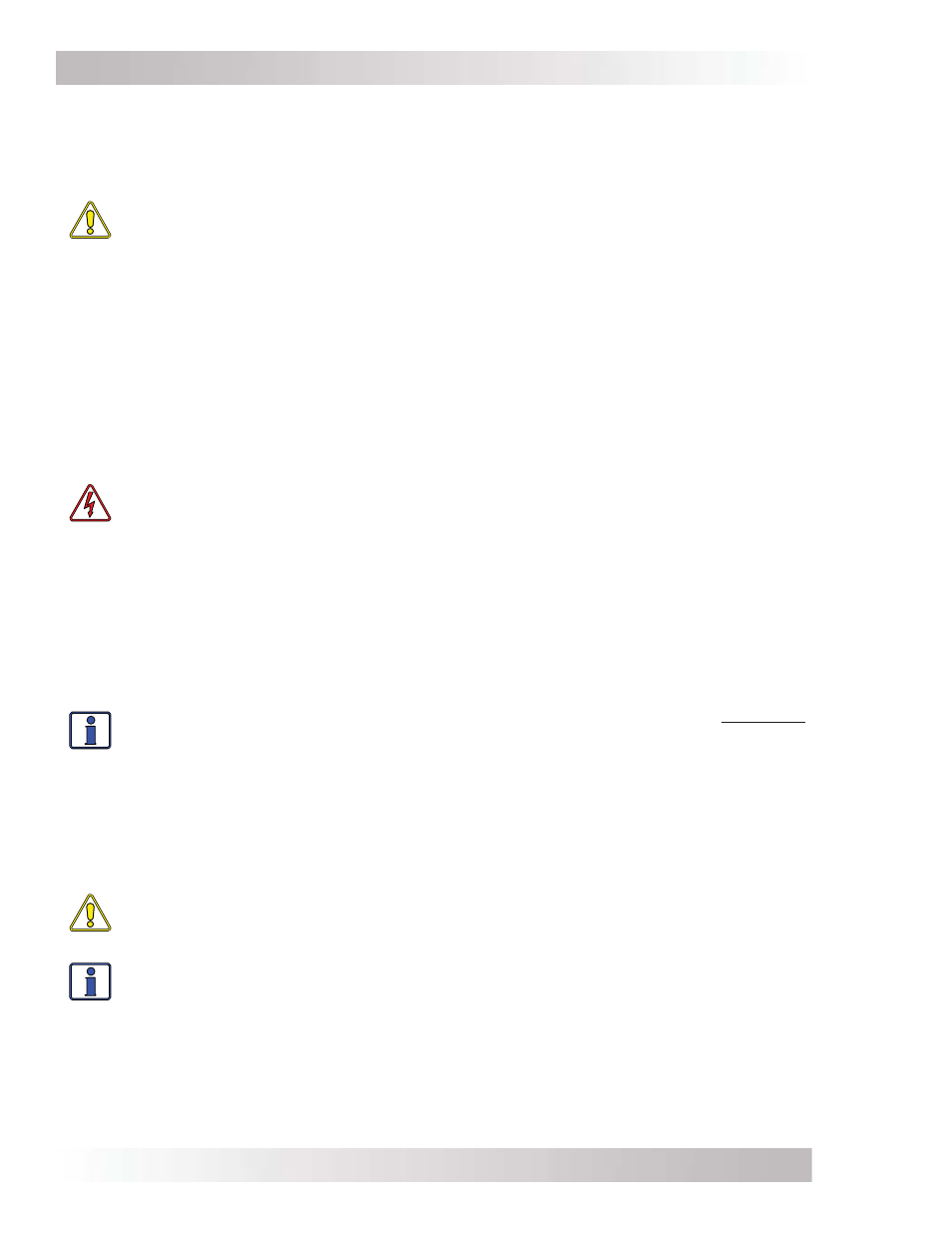5 ac wiring, 1 pre-ac wiring requirements, 2 ac wire size and overcurrent protection – Magnum Energy MSH-M Series User Manual
Page 28

©
2013 Magnum Energy, Inc.
Page 19
Installation
2.5 AC
Wiring
This section provides information on how to make the AC connections to the inverter using the
correct AC wire size and corresponding overcurrent protection.
2.5.1
Pre-AC Wiring Requirements
CAUTION: Before installing any AC wiring, review the safety information at the
beginning of this manual and the following to ensure a safe and long-lived system:
• Always use properly rated circuit breakers. If using an electrical sub-panel, circuit
breakers can be moved from the main electrical panel to the sub-panel only if the
breakers are also listed to be installed in the sub-panel.
• AC wiring must be no less than #6 AWG (13.3 mm
2
) gauge copper wire and be
approved for the application (i.e., RV, or marine wiring).
• DO NOT connect the inverter’s output to an external AC power source. This could
cause severe damage to the inverter and is not covered under warranty.
• The wire sizes recommended in this manual are based on the ampacities given in
Table 310.17 (in free air) of the NEC, ANSI/NFPA 70, for 75ºC (167ºF) copper wire
based on an ambient temperature of 30ºC (86ºF).
• The AC input and output neutrals must be isolated from each other, do not route the
AC input and output neutrals to a common neutral bus.
WARNING: To reduce the risk of fi re, do not connect this inverter to an AC load center
(circuit breaker panel) having multi-wire branch circuits connected.
2.5.2
AC Wire Size and Overcurrent Protection
The AC input and output wiring must be sized per the local electrical safety code requirements
to ensure the wire’s ability to safely handle the inverter’s maximum load current. The AC wiring
must be protected from short circuits and overloads by an overcurrent protection device and have
a means to disconnect the AC circuits. AC overcurrent protection is not included in the inverter
and must be provided as part of the inverter installation. The AC overcurrent protection device
must be a circuit breaker or a fuse/disconnect and be properly sized and branch circuit rated for
the wire it is protecting and the appliances being powered.
Info: When wiring the AC input and output circuits, we highly recommend a full system
Inverter Bypass Switch. This simple item provides a convenient way to isolate the
inverter for battery maintenance, and it could save you hours of downtime—if you ever
need to service your inverter—by enabling you to continue to power your AC loads
without any re-wiring.
The full AC continuous pass-thru capacity of the MSH-M Series inverter/charger is limited to
60 amps. The AC input to the inverter requires a 60-amp continuous duty rated breaker, which
corresponds to a minimum cable size of #6 AWG or 13.3 mm
2
. If you are using other circuit
breakers/wire sizes, refer to the appropriate electrical codes for sizing requirements.
CAUTION: The inverter’s internal AC transfer relay contacts are rated for 60 amps, the
pass-thru current for relay contact must be no greater than 60 amps or damage to this
relay may occur.
I
nfo: ABYC requirements (Section 11.10.2.8.4) – If required, overcurrent protection for
power-feeder conductors from the inverter shall be within seven inches (180 mm) of the
output connections, or may be within 40 inches (1.0 meter) of the output connections if
the unprotected insulated conductors are contained throughout their entire distance in
a sheath or enclosure such as a conduit/junction box or enclosed panel.
